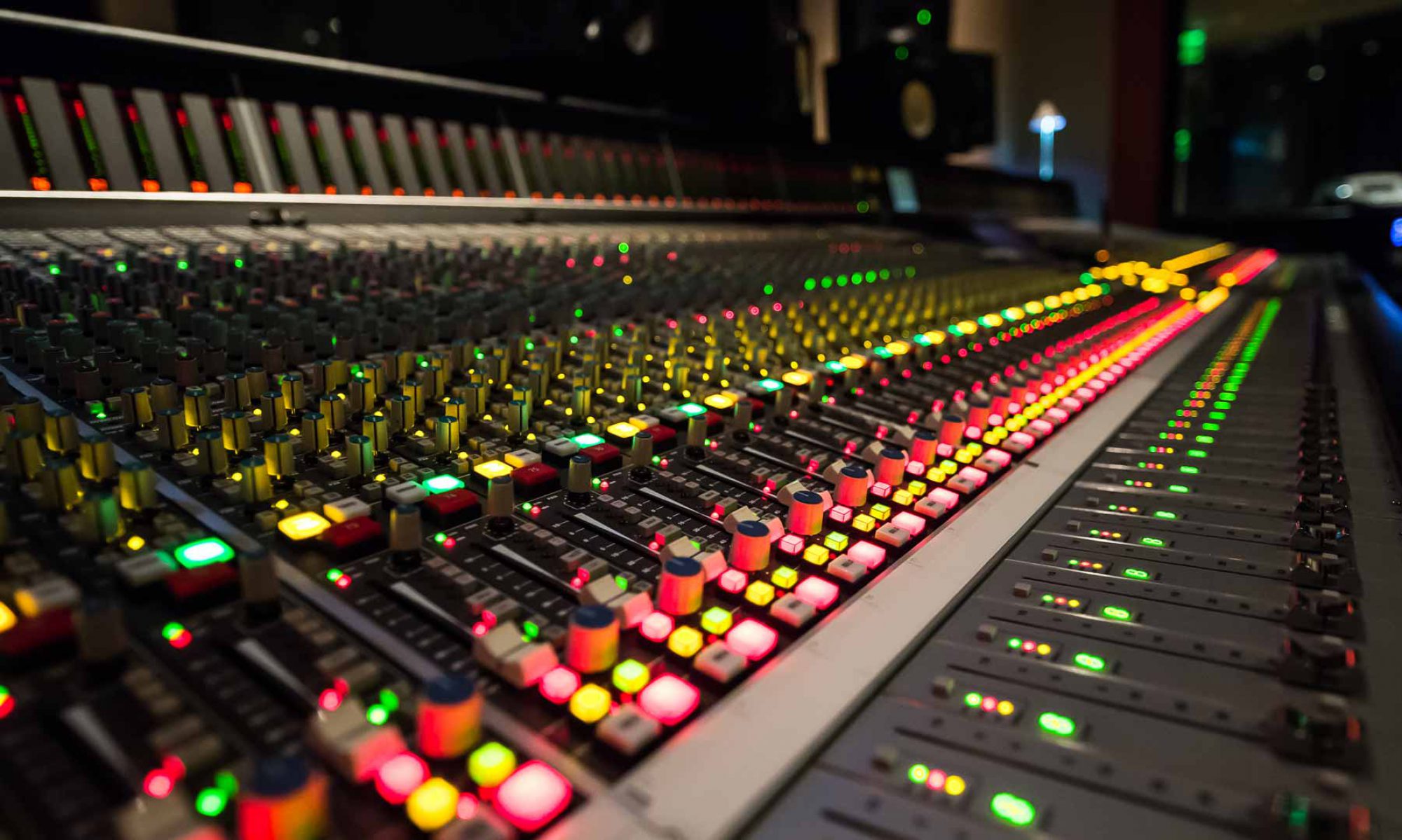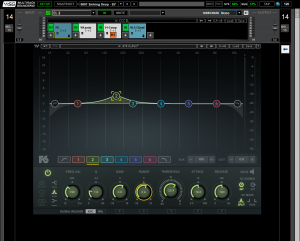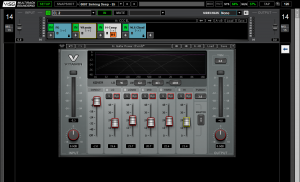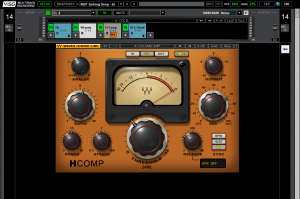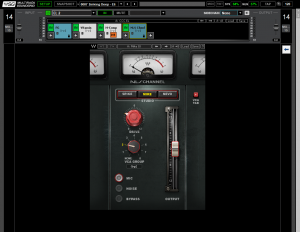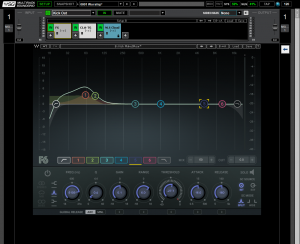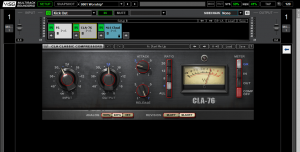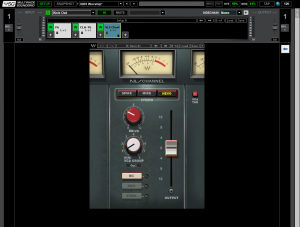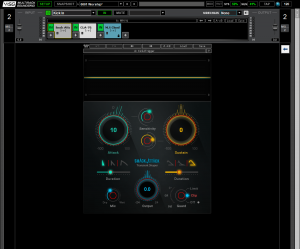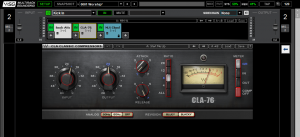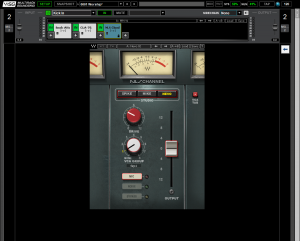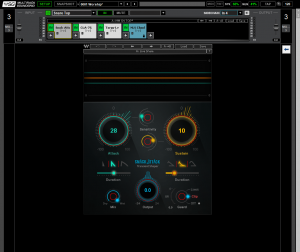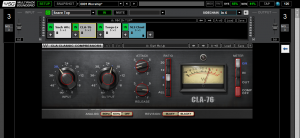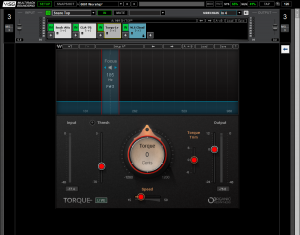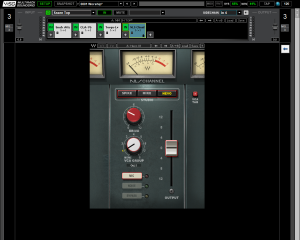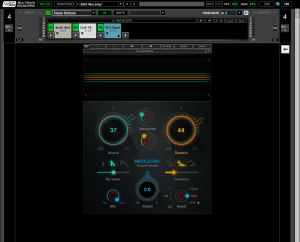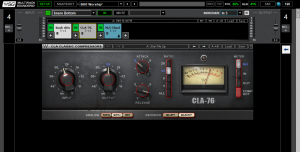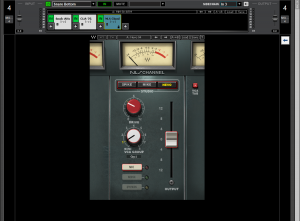I wanted to take a break in the middle of this big series talking about my multirack setup because it’s just a lot of information to keep up with so it’s time for something just a bit different than you might have expected. If you missed those first four posts here are some links for you (Vocals, Bass Guitar, Kick and Snare, Electric Guitar). Before writing this series I knew I wanted to be sure to make at least two points and make them stick. The first is that my setup doesn’t work for everyone. There are times when it doesn’t work for me and I need to start over and times when only minor changes are needed. Templates are starting points to decrease setup time not permanent configurations. I’ve said this a lot and so I don’t feel the need to drill this down even more if only to remind you that what I’ve been writing about is my starting point, there is a lot of tweaking, editing, adjusting, burning with fire, and general changes that are made so that it fits every weekend or event. This file exists to get me where I need to get to faster so I can focus on mixing and not programming.
The second thing I wanted to talk about is the topic of this post, sometimes you can over-process, overthink, and overdo live mixing. I’m seeing a trend of using as many plugins as you can thinking that if only you had that one plugin all your problems will be solved instead of going back to the basics and making sure you XLR lines are all cleanly soldered, you have a full understanding about every setting within your soundboard, etc. As with all technological advancements you still need to establish some sort of balance between traditional methodology and utilizing those shiny new tools that are now available. Keep in mind, I am in no way arguing against the use of waves plugins or processing of any kind, just that when you do, make sure there isn’t a fundamental issue that is easily fixed first not already taken care of. After you’ve done that it’s just as important to make sure you aren’t over-processing to the detriment of your mix.
I’ve compiled three things to keep aware of when you about setting up your waves plugins whether you are in a live setting or in a studio. As with every tool, it is possible to use it the wrong way or in a way that does not work as well as perhaps another tool.
If you have more than a few plugins on a percussive input (i.e. kick, snare, toms, etc) it’s time to go back to square one.
I see this so many times, whether in the live or studio world, people are stacking compressors, harmonics, EQs, etc up on things like the kick drum or the snare in search of that magical sound. To make matters worse these usually sit right on top of the processing they are already running on the soundboard (usually at least an EQ maybe some compression). I’ve had a few friends ask why their kick drum sounds dont’ sound quite right and one of the biggest and I would argue most neglected reasons is that they haven’t changed/tuned the drum heads in a really long time not because they aren’t using the right plugins. Back in those early days I used to fight getting good drum sounds and had never been at a place that really takes care of their drums like my current job and so I didn’t really know how easy things really get when you have a properly tuned and maintained drum kit. I can do all my EQ work on my console and can than use one of a few compressors doing different things, send it through NLS and that’s it. If you’ve hit that wall, take a minute, turn off all processing even your EQ on the board, walk up the drums, listen to it being played in person, than walk back to the board and start over. Use as few tools as you can. Save all your cool tricks for more dynamic sources like guitars and bus groups. You’ll thank me later because the easiest way to suck the life out of your drums is to over-process them. Secondly, make sure the rest of the fundamentals are there. I mentioned going up and listening to the drum itself because you will hear issues like that and realize that you need to fix that. Are your mics in the right places? Did you adjust them after the drummer got settled in? Are they all working? You get the picture.
If you don’t have the headroom like you used to have, start turning plugins off. This also goes the same for guitars and noise floors.
It is so easy to layer compression in a channel and then compound that even more by turning on a group compressor. Every time audio goes through a gain stage, noise is introduced. The quality of the pre-amp modeled or otherwise will affect how much is added. If you have another gain stage or compressor after this you are now gaining the added noise and so on and so forth. If you setup your gain without enough room before feedback, each time you compress you approach that limit even more until you lose all of your headroom. The thing to remember is when you add a compressor, you multiply the ratios. For example, if I have the c6 running on a vocal (average of 5:1), a cla-76 (running at 8:1), and then a group compressor (running at 3:1), that means your total ratio is 120:1. Sometimes this is a good thing but I’m guessing it’s not great for most. If your overall ratio is approaching or above 60:1, on any input, take a good look at how you are using that compression an whether or not you are actually improving the sound. There are some instances where this is a good thing but many more where it can be troublesome or not worth the squeeze.
The same thing goes for noise flors. Every plugin you add in and every gain stage will add noise to your input. There are many ways to mitigate how well this noise is heard but this is definitely something to consider if you are having issues. In fact, many of your waves plugin presets will have that “analog” knob turned on by default in many of their presets which is turning on the measured noise that is added from the original analog plugin. Sometimes you can turn this off, in many instances (I would argue anything outside of the studio) turning this off will benefit you. If it is bringing some sounds you like just be careful where this simulated warmth is coming from and what is after it. For me, this is one of the reasons why my HComp is sitting at the end of every chain it is in, because I don’t want that noise to be compressed and staged. In other occasions because you are adding in harmonics, plugins like the Vitamin, the plugins naturally add noise because it is yet another gain stage. This isn’t to say we shouldn’t use these plugins, we just need to be aware of the “price of admission” when it comes to increased processing.
If you don’t know what plugins to use, try not using any to start with and add in plugins that solve specific problems. See above rules for additional guidance.
You don’t have to use a plugin on every input. I know, I know, I’ve just spent four weeks advocating using the NLS plugin on every input, but for me, I have a specific purpose and I’m not afraid to take it out of the chain if there is a problem being created by its presence. Using that plugin allows me to get the warmth out of the drivers in my Meyer PA that I usually don’t feel until I hit much higher SPL levels. When I demo’d it, if I’d found that it didn’t do anything that I needed, I would have happily walked on past and never used it again. Don’t be afraid to do that. If you’re having trouble with an input, take a minute, turn off all your processing (EQ, compression, everything!) and listen again to the issues you are hearing to make sure your processing isn’t the source (more often than not, it might be!). Than one by one, turn your EQ on and fix something. Listen again. Are there dynamic issues to be fixed? Ok, turn on the compressor of your choice. Listen again. Is it better than before you turned on that plugin? If there aren’t any more issues, just let it be and check in on the fundamentals in play like mic choice/placement, etc. If there are more problems, rinse and repeat. Don’t just throw plugins in there because you like using it or are familiar with it, put it on there because you know that the plugin in question will add something or fix a problem. Then, set it up and bypass it and make sure things are still better off just to make sure.
One last bit of advice, if you are new to the whole plugin thing and were never really exposed enough to the stuff that is being emulated leaving you unsure where to begin, you could start in waves by using some of the signal chain plugins like Butch Vig Vocals, CLA Signature Series, Maserati Signature Series, Greg Wells Signature Series, and so many more. The key here is that these are sets of plugins that can be used over a wide variety of inputs. Each plugin is a specifically designed plugin chain and gives you an easy way to achieve results quickly. You don’t have much control over each setting but you get the basics and it will make starting out easier. If you are more experienced than I wouldn’t recommend these because you will likely want more control but if speed and usability is your goal or you are just starting out, these are very reasonably priced packages that can do a lot for you without much effort. Than later, once you get your feet wet within the waves ecosystem you can start picking up the individual plugins that these are using. Just my two cents….
Don’t worry, this was just a one week reprieve from the fire hose, I will be back next week to discuss how I handle acoustic guitars. If you like what you are reading and want to be sure not to miss the next post, please feel free to subscribe to this blog at www.studiostagelive.com/subscribe. Lastly, as always if you have any questions feel free to comment below or email me at daniel@studiostagelive.com. See you next week!
